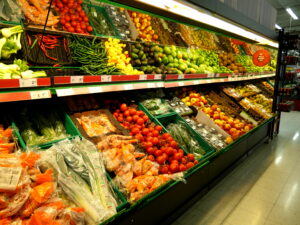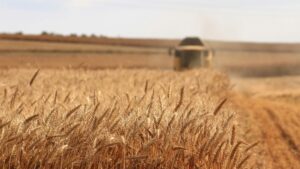Sensing and Satellite Technology Advances are Unlocking Carbon Markets for Farmers
Agriculture has a compelling role to play in decarbonization, as it has the potential to both emit and capture carbon. Agricultural activities, such as heavy tillage and grazing livestock, emit greenhouse gases from the soil into the atmosphere.
At the same time, a shift to more sustainable on-farm practices – and the adoption of technologies that can support these – is enabling farmers to leverage the carbon cycle (see image below), removing carbon from the atmosphere and sequestering it in the soil.
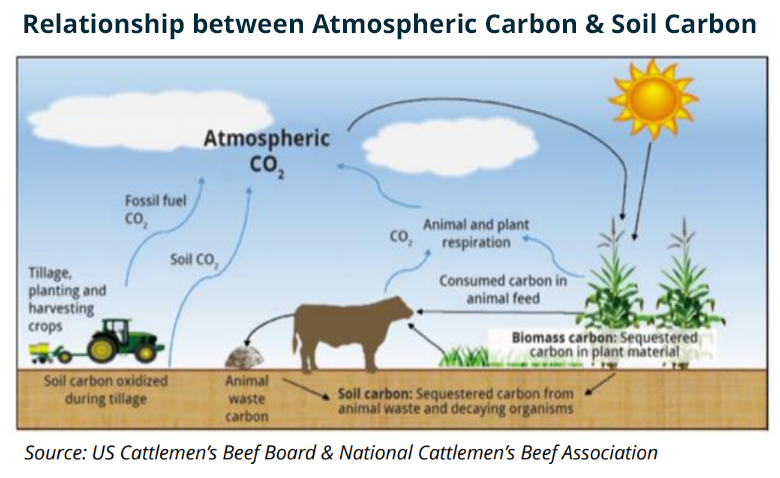
This ‘carbon farming’ approach presents an opportunity for the agricultural community to participate in carbon markets and earn additional revenue while also providing co-benefits such as improved soil health and yields, and better water retention to address food security concerns. Existing soil carbon can be maintained (avoidance) while additional carbon can be sequestered (removal) and monetized as carbon credits.
But transitioning to such methods and technologies represents a high business risk for farmers, potentially requiring financial support; while conventional measurement of soil carbon (i.e., via physical sampling) is expensive and time-consuming.
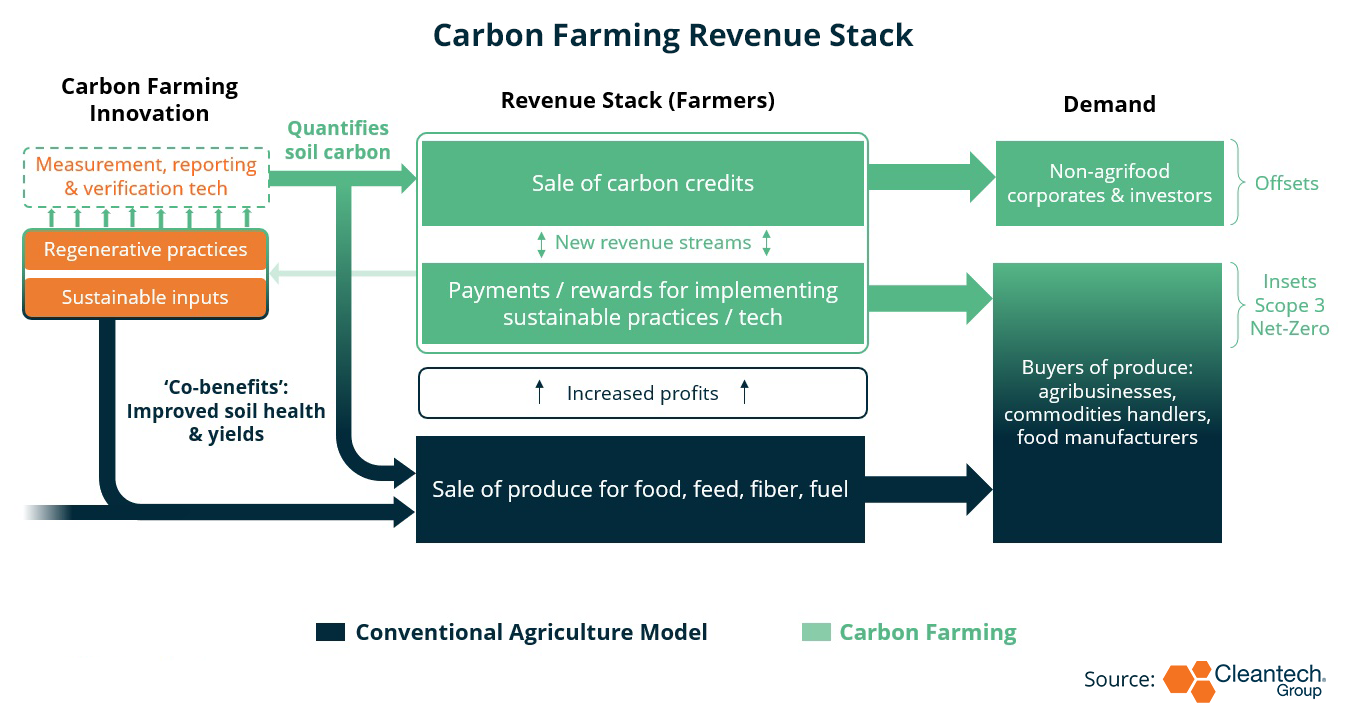
According to analysis from American University, carbon farming has the potential to sequester up to 5 gigatons of CO2eq per year by 2050.
However, the market for soil carbon credits remains small, as measuring soil carbon levels and fluctuations over time is complex and challenging.
Conventionally, measuring soil carbon stocks has relied on physical sampling, which is expensive and time-consuming.
Fortunately, emerging technologies like satellite imaging, remote sensing, and AI modelling are helping farmers and agronomists obtain an accurate understanding of soil carbon stocks in a faster, more scalable, and more cost-effective way.
- These advances in measurement, reporting, and verification (MRV) technologies are creating opportunities for farmers to participate in carbon markets, connecting the ‘supply’ of sequestered soil carbon to the ‘demand’ for offsets and insets by ensuring that carbon farming practices achieve verifiable results.
- The additional revenue from carbon markets is minimal today, but importantly can help farmers overcome the CAPEX of using sustainable farming methods and technologies – and access better profitability from their core business of selling agricultural produce.
- Co-benefits of carbon farming – such as improved soil health, plant nutrient uptake, and moisture retention – can further enhance yields and profitability.
Building a Credible Soil Carbon Market
Much of the impetus behind carbon farming is coming from agrifood corporates that are looking to reduce Scope 3 emissions and are setting up insetting programs with their farmer-partners:
- While insetting demand will likely remain the key driver behind carbon farming, non-agrifood corporates are also turning to the sector in search of offsetting opportunities.
- Companies like Microsoft, IBM, and Shopify have already purchased agricultural carbon credits to offset their own emissions.
- There is increasing government support for carbon farming in some jurisdictions; the U.S. Inflation Reduction Act will provide $40B to finance “climate-smart agriculture” including carbon sequestration projects.
- We expect to see further development of standards and methodologies around carbon farming verification and measurement, which will be needed for the soil carbon market to gain traction.
Early-Stage Funding for Carbon Farming Tech on the Rise
Carbon farming touches on multiple tech segments within Cleantech Group’s Agriculture & Food and Resources & Environment industry groups:
- The chart below combines venture funding data from our geospatial imagery and soil monitoring
- Measurement, reporting, and verification (MRV) solutions are providing access to carbon markets for farmers and agrifood companies.
- The spike in funding to these subsegments in 2020 is mainly explained by two nine-figure growth rounds raised by farmer marketplace and carbon trading platform Indigo. It scored $175M in a FedEx-led round in January that year, followed by $360M from Alaska Permanent Fund, Empede Capital, and Flagship Pioneering in August.
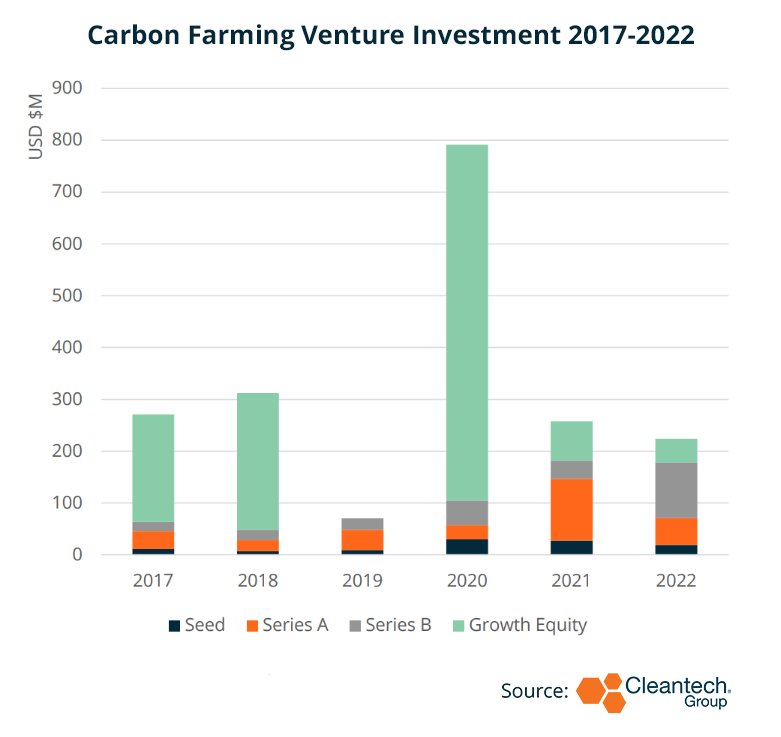
Series A and B deals for carbon farming tech innovators picked up over the past two years:
- Among the notable transactions was a $38M Series B raise closed by Regrow, a provider of carbon MRV software for the agricultural industry; investors included Cargill, Main Sequence, and Microsoft’s VC unit, M12.
- The California-based startup has partnered with the likes of Bayer, Kellogg’s, Nutrien, and The Nature Conservancy.
More recently, there have been signs of consolidation as select start-ups grow their footprint and seek to expand their offerings:
- Agreena, a Danish startup which has developed an agricultural carbon credits platform, acquired UK-based remote sensing provider Hummingbird Technologies for an undisclosed sum in July 2022.
- The deal combines capabilities in carbon credit generation and soil monitoring technology, enabling Agreena to execute on its global expansion plan.
Focus on Carbon Credits
At this point, there is no solidified global framework for measuring and verifying soil carbon stocks. Business models centered on supporting farmers and their soil health may fare better than those centered around carbon credits. This is especially relevant given the global trend towards making farms more climate- and drought-resistant.
What is Carbon Farming? Jack Ellis and Zainab Gilani, of Cleantech Group, discuss the practice, as well as generating carbon offsets, and the current trends in Agritech.


